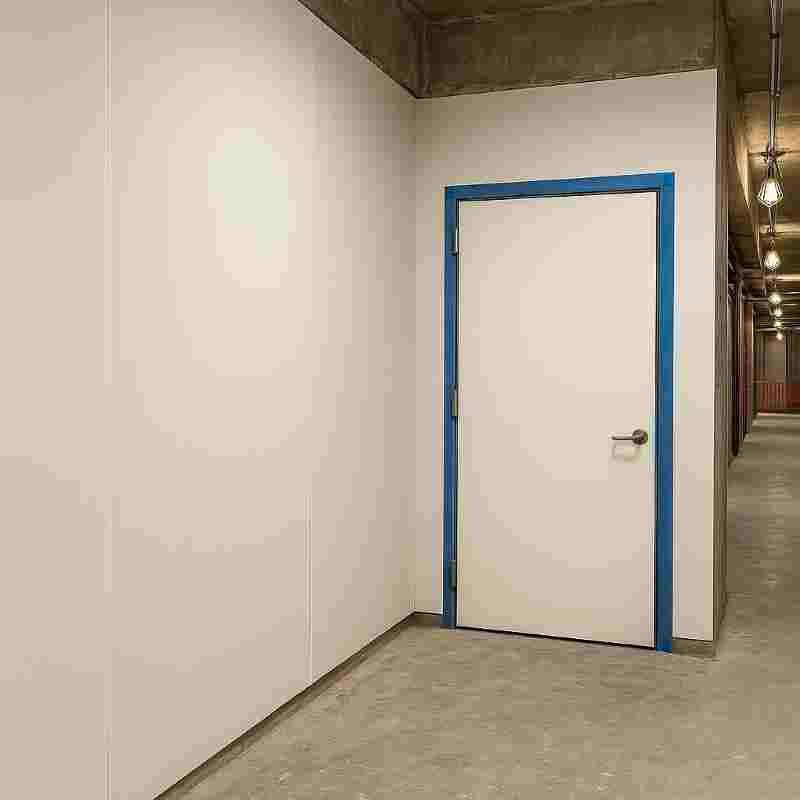Last Updated on August 1, 2025 by Admin
Construction sites are busy, unpredictable and full of moving parts. With multiple trades working simultaneously, tools in constant motion and materials being delivered and installed daily, high traffic zones are among the most vulnerable areas on a site. One of the simplest yet most cost-effective ways to protect your project’s timeline and finish quality is by using temporary wall and door protection.
In Australia, where building standards are high and client expectations even higher, avoiding damage during construction is not just about aesthetics. It’s about safety, efficiency and meeting contractual handover obligations. In this blog, we’ll explore how and why temporary protection for walls and doors is a must have in high traffic areas of any construction site.
Table of Contents
Why High Traffic Areas Are at Greater Risk
Certain zones on a site such as entryways, hallways, service cores, stairwells, lift lobbies and utility corridors see the most foot traffic, equipment movement and material handling. These areas are essential access points and can experience:
- Repeated contact from carts, trolleys, ladders and tools
- Accidental scuffs, scratches and dents from tradespeople or equipment
- Exposure to moisture, dust, paint or chemical splashes
- Bumping or scraping during installations or demolition works
Unprotected surfaces in these zones can suffer significant cosmetic or structural damage. This often leads to costly rework, project delays or disputes with clients and contractors.
What Is Temporary Wall and Door Protection
Temporary protection solutions are designed to shield finished surfaces during the construction and fitout phase. These include:
- Wall protection sheets such as corrugated plastic (like Corflute), fire retardant boards or foam backed panels adhered or fixed to walls
- Corner guards to prevent chipping and cracking on external corners
- Door sleeves or covers that wrap around door faces and frames to prevent scratches and dents
- Impact barriers made from reinforced or padded materials placed along corridors or lift lobbies
- Custom cut protective wraps for high value joinery, door jambs or glazing
These products are typically quick to install and remove, with minimal or no damage to the underlying surfaces.
Benefits of Using Temporary Wall and Door Protection
Reduces Damage and Rework
Repairing a dented door or repainting a damaged hallway can cost hundreds or even thousands of dollars. Protective coverings prevent damage from occurring in the first place.
Speeds Up Final Handover
A clean, undamaged site at the end of a build makes practical completion easier and helps avoid disputes over defects. It also reduces the likelihood of last minute touch ups delaying handover.
Improves Safety
Protective barriers act as buffers between moving equipment and people. Many products include high visibility finishes or fire retardant properties that contribute to overall site safety.
Supports WHS and Compliance
Australia’s Work Health and Safety regulations require builders to maintain safe work environments. Damage to walls or corners can lead to sharp edges and unsafe conditions. Protection helps prevent this.
Enhances Professional Reputation
Clients, consultants and project managers notice a well maintained site. Surface protection demonstrates attention to detail and a commitment to delivering high quality outcomes.
Common Applications in Australian Construction Projects
Temporary protection is especially useful in the following high traffic areas:
- Lift lobbies and corridors with frequent movement of tools and materials
- Main entryways prone to bumps from deliveries and exposure to the elements
- Stairwells and escape routes used repeatedly by multiple trades
- Occupied renovations in hospitals, schools or office buildings where disruption must be minimised
- Luxury homes and high end apartments where finishes need to remain pristine for client inspection
Choosing the Right Protection Materials
Not all protection products are created equal. When selecting wall and door protection, consider:
Durability
For high impact areas, use materials like Corflute or reinforced plastic panels that can withstand knocks and abrasions.
Fire Safety
In commercial or public buildings, select fire retardant materials that comply with Australian Building Codes and fire safety regulations.
Ease of Installation
Choose options that are quick to install and remove without damaging surfaces. Magnetic fasteners or low tack adhesives are useful for sensitive finishes.
Reusability
For large scale or ongoing projects, reusable materials reduce cost and environmental impact over time.
Environmental Responsibility
Many products are recyclable or made from recycled content. Look for suppliers that prioritise sustainability.
Tips for Effective Use
- Identify high risk zones early during site planning and implement protection before finishes are installed
- Install protection before major trades enter the area, especially after painting, plastering or joinery works
- Inspect regularly to ensure materials remain intact and effective throughout the construction period
- Remove protection only after all work is complete and the area is ready for cleaning or client handover
Conclusion
Wall and door protection is often overlooked but plays a vital role in keeping construction projects on track. In high traffic areas, damage is not just likely — it is expected unless preventive measures are in place.
Using temporary protection can prevent costly rework, reduce delays and improve site safety. It also supports compliance with Australian standards and presents a more professional site to clients and stakeholders.
For builders, project managers and trades working in busy environments, surface protection is not just a smart precaution. It is a project essential.
Related Posts:
- What Are the Top-Rated Temporary Wall Systems for Construction? Expert Recommendations
- Why Temporary Fencing Is Essential for Every Construction Project
- Where To Start With Hiring Temporary Trackway Matting
- Exploring Insulation Solutions for Different Climate Zones


